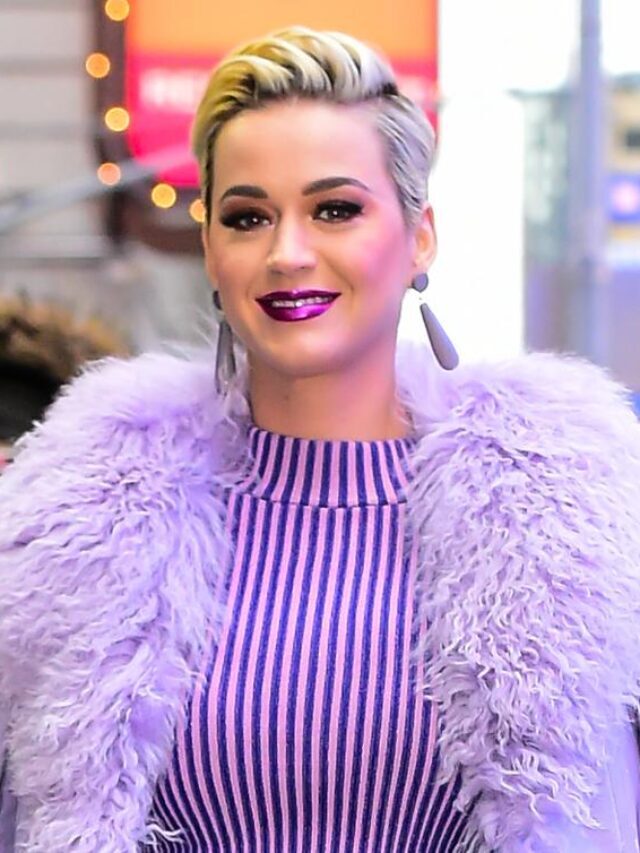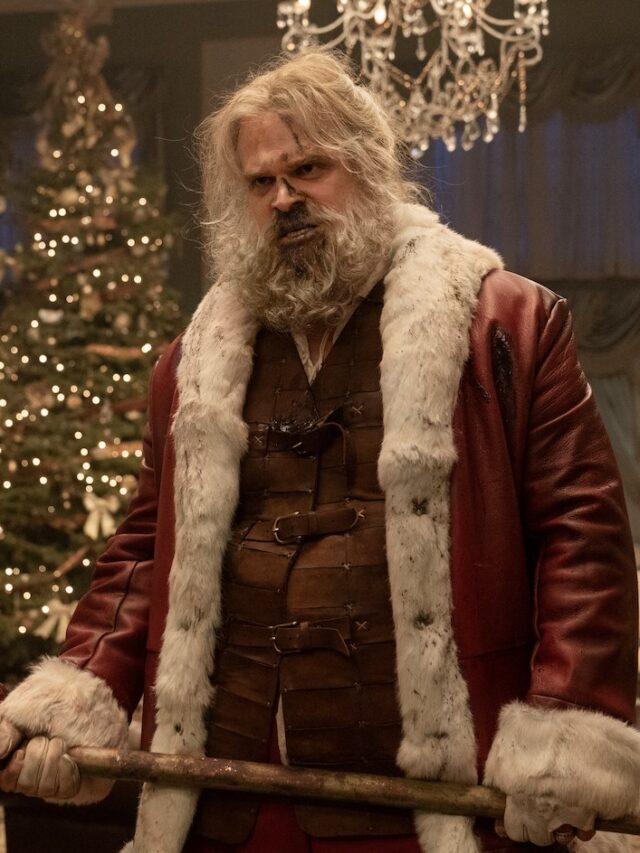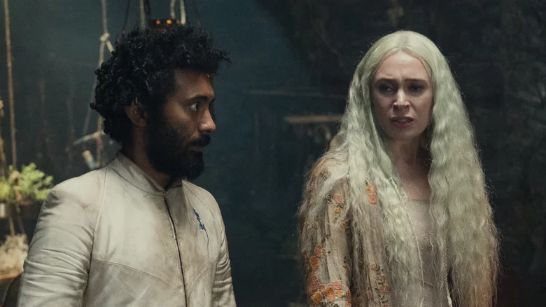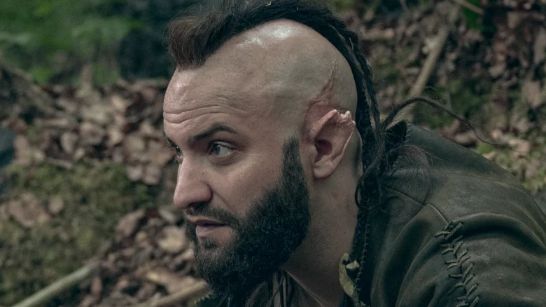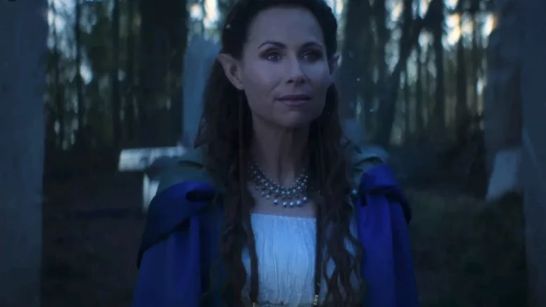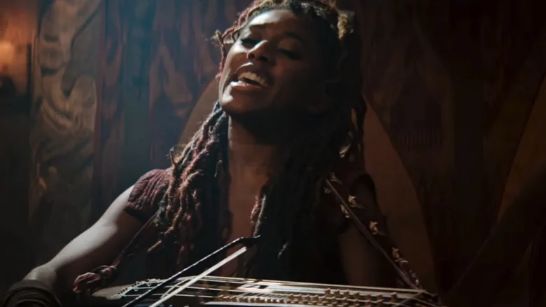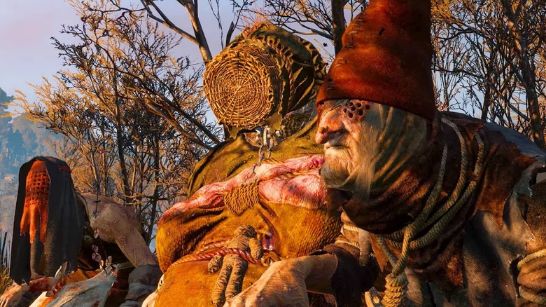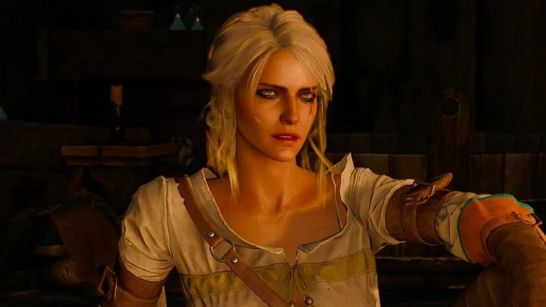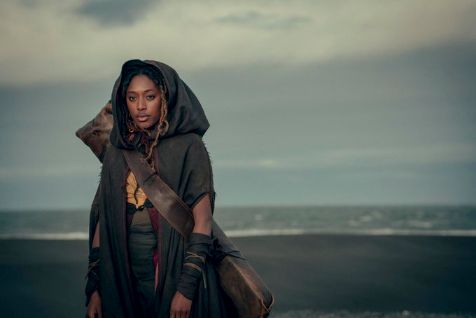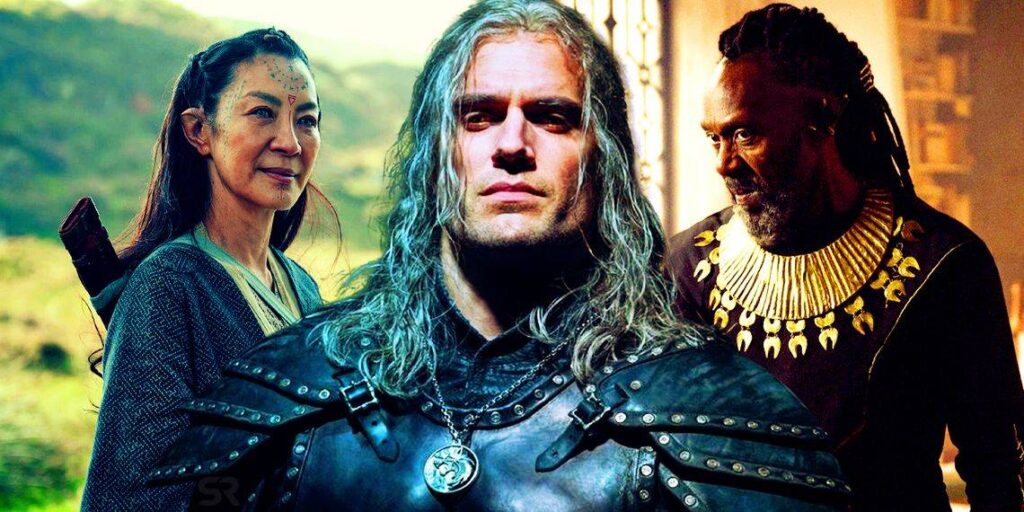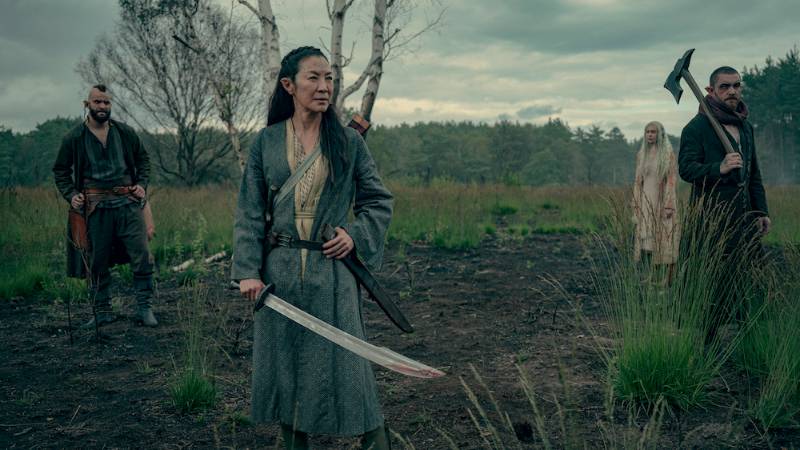With the release of “The Witcher: Blood Origin,” an original miniseries that takes place 1,200 years before the events of “The Witcher,” the World of the Witcher on Netflix keeps growing. True to its name, it provides a historical foundation for several significant ideas and occurrences that are part of the franchise’s canon, including the Conjunction of the Spheres, the Wild Hunt, and of course, the first Witcher. You might be shocked to learn that “The Witcher: Blood Origin” is packed with Easter eggs and subtle references due to the enormous amount of mythology and story to be explained. The story covers a lot of ground in the World of the Witcher, much like its band of wandering characters.
“The Witcher: Blood Origin” manages to make references to other Netflix shows, the Andrzej Sapkowski source novels, and even the well-known video game franchise over the course of its four-episode season. Others of them take the shape of lighthearted, meta-referential dialogue, some are style and theme homages, and some are even hidden additional origin tales, but all of them work to strengthen the bonds between the series and its characters. Here are some of the best minute elements you overlooked in “The Witcher: Blood Origin” as an example of that new connection.
Table Of Content
Avallac’h
Even the most casual of fans will recognize the significance of a select individuals in “The Witcher: Blood Origin,” such as Fjall, the first to pass the Trial of the Grasses and turn into a monster-slaying Witcher. Then there are certain characters whose significance is left unclear towards the end of the series, leaving them as intriguing leads that can only be discovered by ardent fans. Avallac’h, the young Elvish apprentice, is the only character in “The Witcher: Blood Origin” whose significance to the plot is greater than it initially appears.
Fans of the books and video games will recognize Avallac’h as one of the most significant figures in the history of Elvendom and Ciri, despite the fact that his role as of this writing appears to be so insignificant that it is still uncredited on IMDb (the actor is Samuel Blenkin).
Avallac’h is described as an elderly Elf with a vast amount of magical knowledge and power in both the books and the video games. Also in both, he believes that Ciri plays the role of the world-ender in the most well-known prophecy on the Continent, Ithlinne’s Prophecy. More so in the games, he takes on the roles of mentor and guardian for Ciri, showing her how to use her powers responsibly and preventing them from getting into the wrong hands. The youthful Avallac’h may yet perform some of the same lofty functions as his equivalents in other mediums, given his appearance in the post-credits sequence of the miniseries’ last episode.
Celestial siblings
The idea of heavenly twins, whether it be superstition or actual magic, appears twice in “The Witcher: Blood Origin,” and it is an intriguing occurrence. The first occurrence occurs when Balor tries to provide a suitable sacrifice in exchange for power to an unidentified godlike deity. The mage offers a pair of heavenly siblings to the invisible power, believing their cosmic significance to be sufficient compensation. Despite the fact that he turns out to be mistaken, at least in the eyes of the enigmatic entity, it is obvious that heavenly siblings are believed to possess a great deal of magical power. Balor is proven to be correct when it is discovered that Syndril and Zacaré are also celestial twins and that their shared link strengthens both of their magical skills. Celestial siblings and the potent destiny they share, though, may already be known to followers of the main series, “The Witcher.”
The wizard Stregobor (Lars Mikkelsen) assigns Geralt (Henry Cavill) the mission of catching Renfri (Emma Appleton), who is a celestial twin herself, in the first episode of “The Witcher.” The strength of celestial twins is determined by their birthdate, particularly by the moon on the night of birth, and Renfri was born during the Black Sun, a foretold eclipse.
Ithlinne
Ithlinne, who has a minor role in “The Witcher: Blood Origin,” is also not mentioned on the series’ IMDb website like Avallac’h, despite the fact that Ella Schrey-Yeats is the actress who plays her. The young girl only makes a fleeting appearance in the beginning and last episodes, serving as the miniseries’ bookends with short hints at what she really is. In both episodes, she shows a natural affinity for magic and the uncommon gift of prophecy by going into trances and giving forecasts to Éile, The Lark (Sophia Brown). Ithlinne and her predictions, however, mean much more to fans of the novels, games, and other media than just providing direction to a lone Elf fighter; they’re the inspiration behind all the plots that wind up engulfing Ciri and Geralt.
Although the Ithlinne we first encounter in the series is simply a young girl, she will eventually develop into the greatest seer of her generation and perhaps perhaps the whole Witcher chronology. She is well-known for a number of prophecies that have come true, but more so for one that hasn’t. Ithlinne’s Prophecy, as it is simply called, states, in part: “The planet will perish in a sea of ice and then be born again under a new sun. It will be born again from Elder Blood, Hen Ichaer, and the sowed seed. a seed that will ignite rather than blossom.” Many of the most knowledgeable and influential people on the Continent believe that Elder Blood to be Ciri, which implies that whoever controls Ciri controls the end and rebirth of the world.
May you burn for all eternity
We hear one of “The Witcher: Blood Origin’s” subtlest Easter eggs due to the elderly Elven magician Balor (Lenny Henry). After sending political adversary Eredin (Jacob Collins-Levy) to another realm, the wizard, who is self-centered, vicious, power-hungry, and vindictive, is unable to resist casting one final curse. Balor adds, “Wherever this takes you, may you burn for all eternity,” as he drives Eredin and his soldiers away. The line is ironic and cheeky for Witcher enthusiasts who are aware of Eredin’s fate.
The deadly raiding force known as the Wild Hunt is led by the Eredin in the books, video games, and other media, who eventually earns the title “King of the Wild Hunt.” This title is granted to him for leading the raids as an old king might. Eredin, disguised as a skeleton warrior, conducts raids on several dimensions, stealing their goods and robbing residents of their freedom while gaining a reputation as one of the most terrible beings living.
Balor’s final curse on Eredin is ironic because ice magic is always used to fight off raids by the Wild Hunt. They specifically use fragments of the all-consuming White Frost to cause terrible early winters on their targets, transform them into ice using frost magic, and even use dog-like ice elementals as their frontline offensive. Eredin is not only not burning forever; in fact, he is freezing more than practically everyone.
No female Witchers, huh?
Within the Witcher canon, it is an unbreakable law that women are not permitted to become Witchers. Women are just not strong enough to face the Trial of the Grasses, let alone the several additional obstacles that follow, and are therefore never even considered for the role, according to the lore constructed by Andrzej Sapkowski. Fortunately, “The Witcher: Blood Origin” has finally adopted a canon position opposing gender equality and common sense in general.
Only the strongest among them have the slightest chance of surviving the metamorphosis, hint Syndril and Zacaré when they suggest building a monster to combat Balor’s monstrosity. The panel determines that Éile, the Lark, is the best option in light of this information. That implies that a female Witcher was initially intended to be the first to inhabit the continent (or, depending on who you ask, plague it). The only reason Fjall secretly goes through the trial in Éile’s place is because he loves her so much and can’t face the notion of her passing away or turning into a monster. Due to the fact that the first Witcher is a man, the absurd notion that women cannot be Witchers spreads.
Poisoned sheep
The third episode of “The Witcher: Blood Origin” contains a particularly happy Easter egg when the show’s motley crew of unlikely misfits plots how to get rid of an extraterrestrial monster. Brother Death (Huw Novelli), who has the group all but admitting their helplessness, suggests, “Why don’t we poison a sheep and feed it to it?” The sole response from the group is a curse from Fjall (Laurence O’Fuarain), which is appropriate for such an insane concept. Even if the situation is amusing on its own, it gets funnier when you understand that it alludes to both the “Witcher” books and the main Netflix series, both of which use the same sheep-based tactic.
In the short novella “The Bounds of Reason” from the book “Sword of Destiny,” Geralt and a sizable group of intrepid travelers search for a purported golden dragon that is said to be terrorizing a small village. A peasant by the name of Sheepbagger had poisoned a dead sheep before Geralt arrived, and it appears that the poisons were successful in killing the dragon. As another dragon starts to attack once more, Geralt shows up, and Sheepbagger once more proposes a poisoned sheep as a solution. This time around, Sheepbagger and his ovine offensive are left out of the plot adaptation for “The Witcher’s” sixth episode of Season 1.
Seanchai or Gaunter?
We’re treated to a surprise sequence with everyone’s favorite lecherous bard, Jaskier (Joey Batey), in the contemporary age as “The Witcher: Blood Origin” opens. Although he is rescued from a bloody and chaotic scene, it is clear that he is still in danger when his rescuer is revealed: the enigmatic, inhuman, and unfathomable figure known as Seanchai. Both Seanchai’s rescue and her immeasurable magic power, much of which she shares with another enigmatic character from Witcher legend, Gaunter O’Dimm from the video game “The Witcher III,” are as frightening as the conflict that came before them.
In the game, O’Dimm shows a particular interest in Geralt, which he never fully explains, and as a result, the character can aid or hurt the Witcher’s quest as he pleases. Similar to this, Seanchai has a particular interest in Jaskier, which she never explains beyond referring to herself as a fellow storyteller. O’Dimm and Seanchai, who respectively upend Geralt and Jaskier’s lives, exhibit a startling level of similarity in their godlike abilities and dubious morality. Both possess the total capacity to stop time, and they freely roam among the frozen population, helping or killing them as they please. For instance, in “The Witcher III,” O’Dimm murders a random time-frozen person by inserting a spoon into his eye, yet in “The Witcher: Blood Origin,” Seanchai uses flowers that bloom from the victim’s throat to kill the same random time-frozen person.
The Black Rose
The elves of Andrzej Sapkowski’s Witcher world are highly influenced by Celtic mythology and genuine Irish history, which is no secret to those who pay attention. Their place names, last names, and even their species name are predominately in Gaelic. For instance, the names of the two primary elf races are Aen Seidhe and Aen Elle, which are apparent puns on the Celtic fairy folk known as aes sdhe and whose names literally translate to “people of the mound” and “alders,” respectively. Numerous more instances exist, such as the elf capital Tir ná Lia, which is obviously modeled after the fabled country of Tr Na ng.
The Lark’s song “The Black Rose” in “The Witcher: Blood Origin” expands on the association between elves and Ireland. Throughout the miniseries, the bard sings the ballad numerous times as part of her broader strategy to spark a revolution among the lower-class residents. The Black Rose, or Róisn Dubh in Gaelic, is a well-known emblem for Ireland and the subject of one of its most well-known compositions. As such, the title of the song makes reference to Irish culture on purpose. The song, which was composed in the 16th century or thereabouts, has evolved into a traditional Irish ballad and, as such, has become a significant component of the national folklore. Naturally, it has spawned many covers and tributes, such as the Flogging Molly song “To Youth (My Sweet Roisin Dubh).”
The Decoctions of the Grasses
The first Trial of the Grasses—the procedure by which Witchers are created—must be introduced because “The Witcher: Blood Origin” presents the first Witcher to ever stalk the Continent. The Trial, or at least the small percentage of children that survive the ordeal, is infamous in the Witcher universe for being a cruel, gruesome process that transforms average youngsters into monster, soulless Witchers. The first Trial we witness in “Blood Origin” is anything from masterful while yet preserving every bit of the savagery, even though the procedure is later refined by the Witcher schools and rendered somewhat routine. It turns out that the ingredients used in this first beta test of a Trial have a lot in similarities with the ingredient list described in “The Witcher III,” which is set 1,200 years after this series. This is an intriguing and easily missed Easter egg.
Zacaré (Lizzie Annis) claims to need “mandrake root, wolf’s-bane and corpse nettle,” as well as “Feainnewed flowers” and the heart of a monster, when she and the rest of the squad gather herbs to start the Trial. The formula is the same when Geralt, Yennefer, and company attempt to make this Decoction of the Grasses in “The Witcher III.” Both the mandrake root and a monster’s heart are still there. The primary distinction appears to be that later Witchers consider the common herbs Bryonia and Ribleaf to be adequate substitutes for the somewhat more uncommon wolf’s-bane, corpse nettle, and Feainnewedd blossoms.
The Ladies of the Wood
When you first meet Seanchai, it becomes painfully clear that there is more to her than meets the eye, especially when it comes to the soldier whose insides she transforms into flowers. For Jaskier and her supporters, though, it becomes impossible to define her precisely. There is one instance where she might, however, take on her true form, and whether it is genuine or not, it almost certainly refers to some of the most infamous antagonists in the franchise.
Seanchai first appears to Jaskier in his own form, which causes the bard to ask him a lot of questions before he responds, “I have other faces… if you prefer.” When she pauses to respond, she transforms from a Jaskier clone into an unidentified, repulsive monstrosity. It is a tall, thick humanoid, with a thick, webbed mask covering its face. In particular, the hulking Brewess from “The Witcher III,” the Crones, or Ladies of the Wood, are strikingly similar to that shape and that mask.
There may have been a previous mention of Brewess and her two sisters on Netflix in the form of the Cabin Witch from Season 2 of “The Witcher.” Many characteristics that the Cabin Witch, Seanchai, and the Crones all have in common can be linked to the Slavic folklore character Baba Yaga. Whether Seanchai is actually one of the Crones or not, the Netflix series has a history of dropping hints about their presence.
Traveling in time
In spite of his limited screen time and plot significance in “The Witcher: Blood Origin,” Avallac’h manages to complete one of the coolest Easter eggs in the franchise. Avallac’h enthusiastically informs Queen Merwyn (Mirren Mack) that the Conjunctions might enable both time travel and interdimensional transportation after being permitted to peruse the works of the brilliant wizard Syndril (Zach Wyatt) on the subject. You might have overlooked this minor point, but Ciri has demonstrated that Avallac’h is correct in this instance.
Following their recent reunion after years apart, Geralt and Ciri engage in a profound fireside conversation in one of the film’s most moving scenes. Ciri informs Geralt that the magician “brought us to a realm where Eredin couldn’t find us” as she reflects on the Wild Hunt’s pursuit of her and Avallac’h’s protection of her. Ciri remembers that when Geralt questions her about that world, “There were no horses, and the inhabitants had metal in their skulls and fought battles from a distance. Instead, each person got a flying spacecraft of their own.” Ciri is telling the truth, despite Geralt’s skepticism. She really did travel into the future, and “Cyberpunk 2077” is set there, as many fans believe.
Our Team DCS includes 5 different writers proficient in English and research based Content Writing. We allow them and encourage them to follow the Entertainment news all day long. Our posts, listicles and even the exclusives are a result of their hard work.



